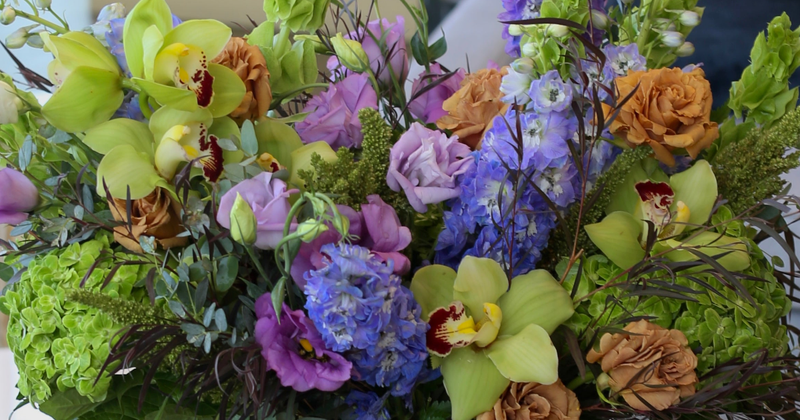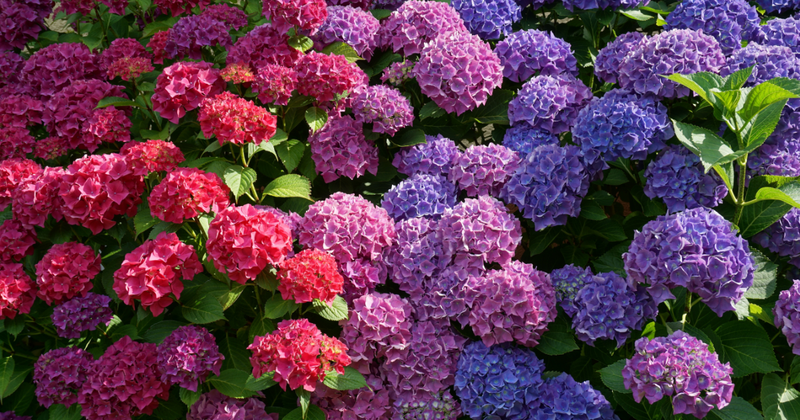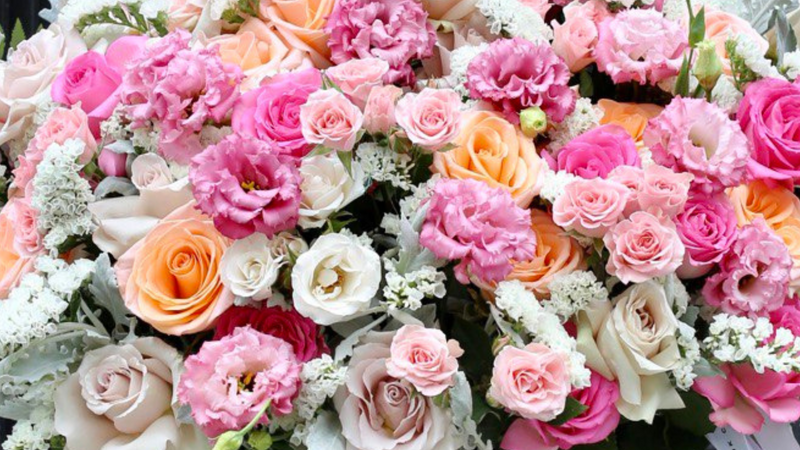Hydrangeas are one of the most beloved garden plants, admired for their stunning blooms and versatility. Whether you’re a seasoned gardener or a beginner, this guide will help you master the art of growing hydrangeas. From planting to pruning, watering, and even adjusting bloom colors, here’s everything you need to know.
Understanding Different Varieties of Hydrangeas
Hydrangeas come in various types, each with its own charm and care requirements. Here are the most common ones:

Hydrangea macrophylla (Bigleaf Hydrangeas): Known for their colorful blooms, these are divided into mophead and lacecap varieties.

Hydrangea arborescens (Smooth Hydrangeas): Popular for their large, white flowers, like the ‘Annabelle’ variety.

Hydrangea paniculata (Panicle Hydrangeas): These have cone-shaped blooms and thrive in colder climates.

Hydrangea quercifolia (Oakleaf Hydrangeas): Unique for their oak-shaped leaves and fall color.
Tip: Choose the variety that suits your climate and garden style for the best results.
Where to Plant Hydrangeas
Hydrangeas thrive in locations with:
Partial Shade: Morning sun and afternoon shade are ideal. Too much sun can scorch their leaves, while too much shade can limit blooms.
Well-Drained Soil: Avoid planting in areas prone to waterlogging.
Good Airflow: Ensure proper spacing to prevent fungal diseases.
Tip: Keep hydrangeas away from harsh winds to protect their delicate blooms.
How and When to Plant Hydrangeas
Best Time to Plant: Early spring or fall, when temperatures are mild.
Steps to Plant:
- Dig a hole twice as wide as the root ball.
- Place the plant so the base is level with the soil.
- Fill the hole with a mix of soil and compost.
- Water thoroughly after planting.
How Often and How Much To Water Hydrangeas
Hydrangeas love water, but overwatering can harm them.
In-Ground Plants: Water deeply 1–2 times a week. Increase frequency during hot weather.
Potted Hydrangeas: Check soil moisture daily and water when the top inch feels dry.
Tip: Water at the base, not over the leaves, to prevent disease.
When and How To Prune Hydrangeas
Pruning depends on the variety:
- Hydrangea macrophylla and Oakleaf Hydrangeas: Trim after blooming. Remove dead or weak stems.
- Hydrangea arborescens and Panicle Hydrangeas: Prune in late winter or early spring before new growth.
Key Points:
- Deadheading: Remove spent flowers to encourage new blooms.
-
Fall Pruning: Cut back up to one-third of the plant if needed. Avoid heavy pruning for macrophylla in fall, as they bloom on old wood.
How Soil and pH Levels Affect Hydrangea Color
Hydrangeas are unique in their ability to change bloom colors based on soil pH:
Acidic Soil (pH below 6): Produces blue flowers.
Neutral to Alkaline Soil (pH 6–7): Produces pink flowers.
How to Adjust pH:
- To make soil more acidic, add aluminum sulfate or organic matter like pine needles.
- To make soil more alkaline, add lime.
Tip: Test your soil’s pH with a kit before making adjustments.
Seasonal Care for Hydrangeas
Spring: Fertilize and prune for fresh growth.
Summer: Keep up with watering and deadhead spent blooms.
Fall: Prepare for winter by adding mulch and trimming back lightly.
Winter: Protect plants from frost with burlap or garden fabric.
Companion Plants for Hydrangeas
Hydrangeas pair well with:
Hostas: Their shade-loving nature complements hydrangeas.
Ferns: Add texture and greenery.
Astilbes: Their feathery blooms enhance hydrangea displays.
Troubleshooting Hydrangea Problems
Wilting Leaves: Check for overwatering or underwatering.
No Blooms: This could be due to improper pruning or lack of sunlight.
Yellowing Leaves: Often a sign of poor drainage or nutrient deficiency.
Final Thoughts
Hydrangeas are a joy to grow and can transform any garden with their vibrant blooms. With the right care, they’ll reward you year after year. And if you love having hydrangeas but prefer to skip the gardening part, why not treat yourself to fresh-cut blooms from your favorite local florist? They're just as stunning and ready to enjoy!
FAQ: How to Grow and Care for Hydrangeas
1. When is the best time to plant hydrangeas?
The ideal time to plant hydrangeas is in early spring or fall when temperatures are cooler. This helps the roots establish before the heat of summer or the chill of winter.
2. How often should I water hydrangeas?
Water hydrangeas deeply 1–2 times a week for in-ground plants. Potted hydrangeas may need daily watering—check the top inch of soil and water when it feels dry.
3. How do I change the color of hydrangea flowers?
Hydrangea color depends on soil pH. Acidic soil (pH below 6) produces blue blooms, while neutral to alkaline soil (pH 6–7) gives pink. Adjust the pH with aluminum sulfate for blue or lime for pink.
4. Do I need to prune hydrangeas every year?
Yes, but pruning depends on the type. Bigleaf and oakleaf varieties should be pruned after blooming. Smooth and panicle types are best trimmed in late winter or early spring before new growth.










